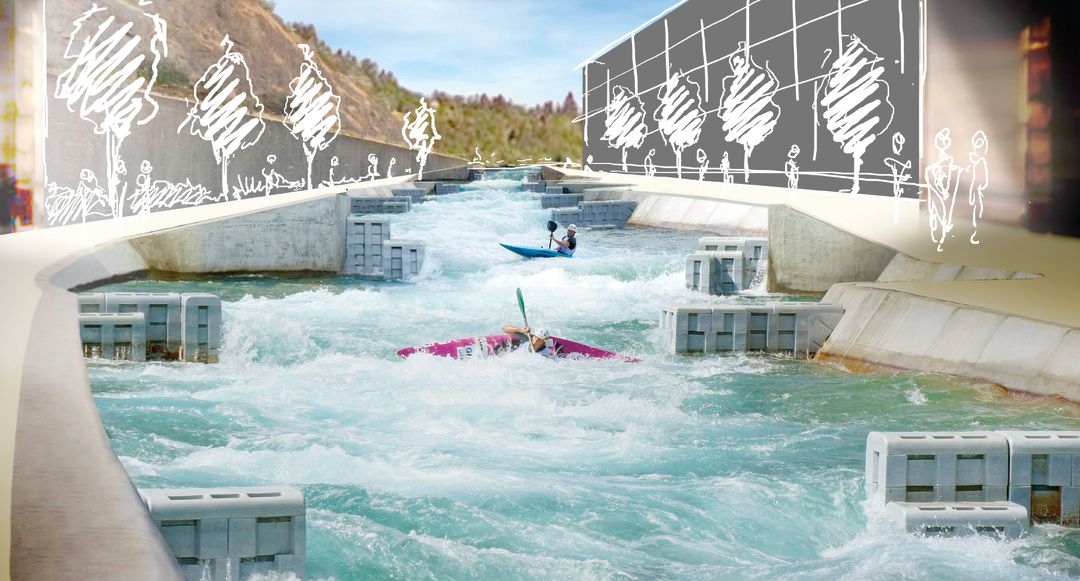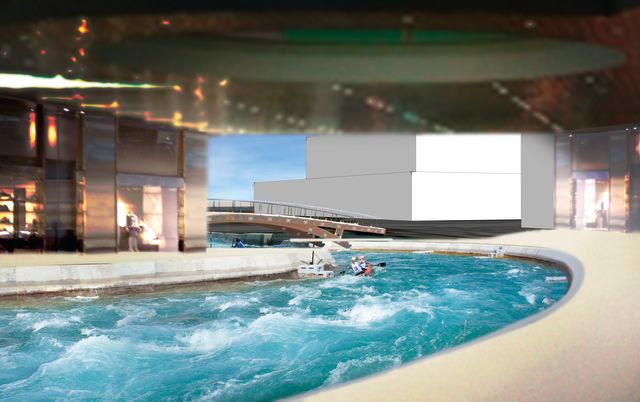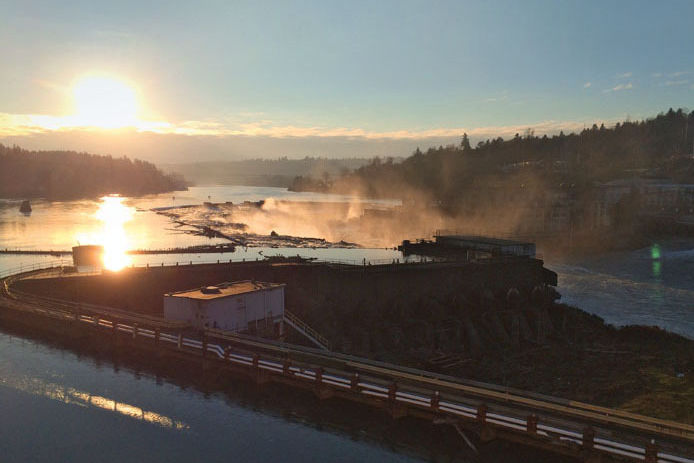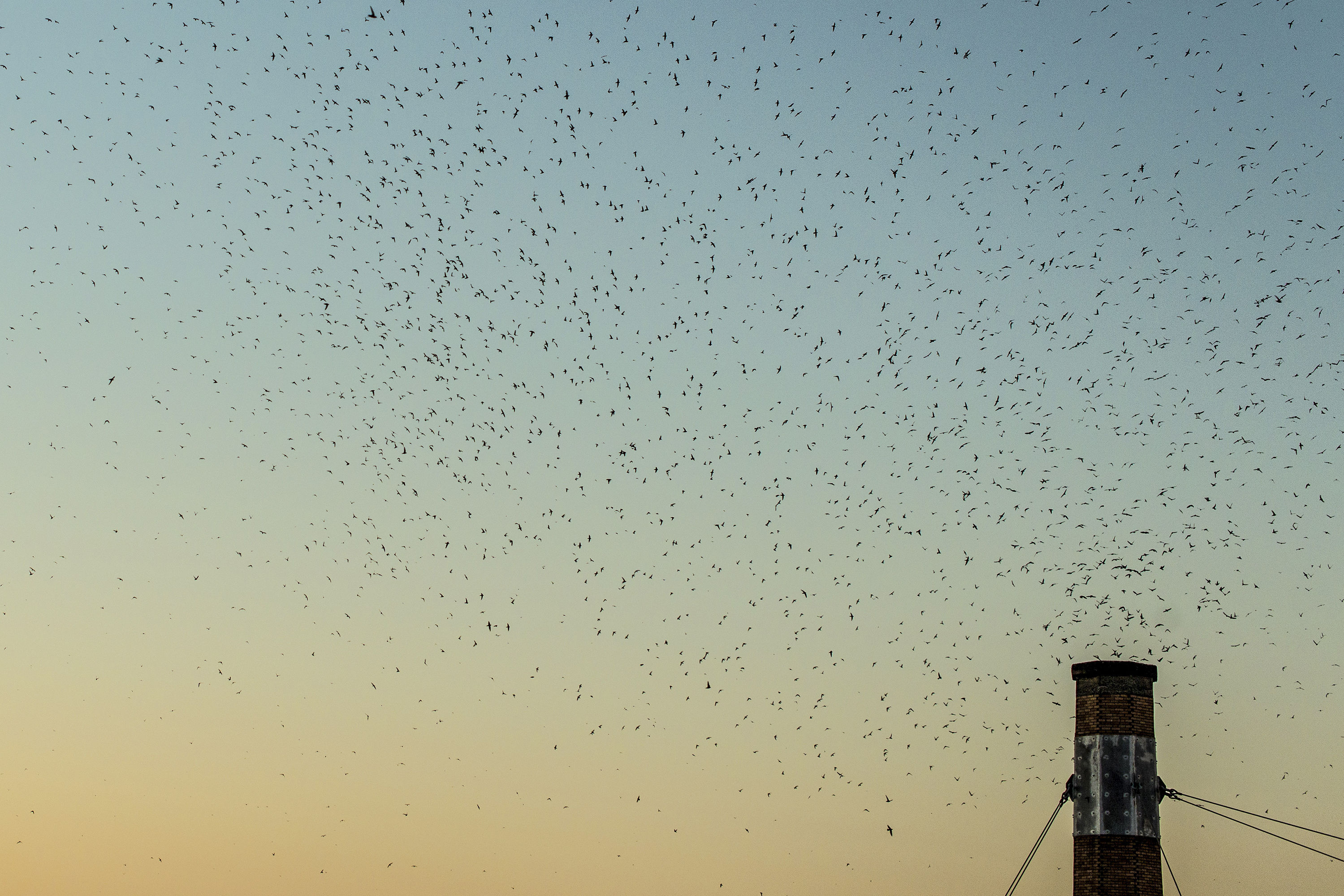Is a Water Park Coming to Willamette Falls?

Early renderings of the white-water park envisioned by Portland nonprofit We Love Clean Rivers
If you count the 5,000 cubic feet of water pouring over its 1,700-foot-wide, horseshoe-shaped edge every second, Willamette Falls is the second largest waterfall by volume in North America after colossal Niagara. But for the past 127 years, the incredible, mist-sprayed sight has been all but inaccessible to regular Oregonians. That’s because dams, plants, and shipping lanes have locked the surrounding area in a mantle of concrete and steel since 1862, when a woolen mill set up shop, followed by Willamette Falls Electric Company’s (now, PGE) two hydroelectric plants and what would later become the Blue Heron Paper Company. Oregon City began rezoning the defunct structures in 2014, hoping to attract new developers.

Now, after just a few years of planning, a Portland nonprofit wants to give a piece of it back to the people. We Love Clean Rivers began exploring the possibility of a white-water park on the lower Clackamas River in 2013, but shifted to Willamette Falls at the suggestion of county administrators. While blueprints (and funding) are still being hammered out, the park’s designers would take advantage of the 42-foot height difference between the top of the falls and the bottom, digging a looping, 2,000-foot channel capable of holding Olympic-quality races. Sitting next to a brand-new Metro-funded riverwalk, the park could attract 380,000 people every year, the nonprofit estimates, generating up to $30 million in revenue for the area. (True to this vision, some renderings show a Disneyland-worthy line of people waiting for the “ride.”)
“We’ve gotten a touch of pushback from people who say they don’t want to see more development at the falls,” says Kate Govaars, a We Love Clean Rivers board member. “But the reality is that the falls have been developed for the past 100 years. What we’re proposing is returning the natural flow of water back through the Blue Heron site, and returning the natural affect of the falls.”




